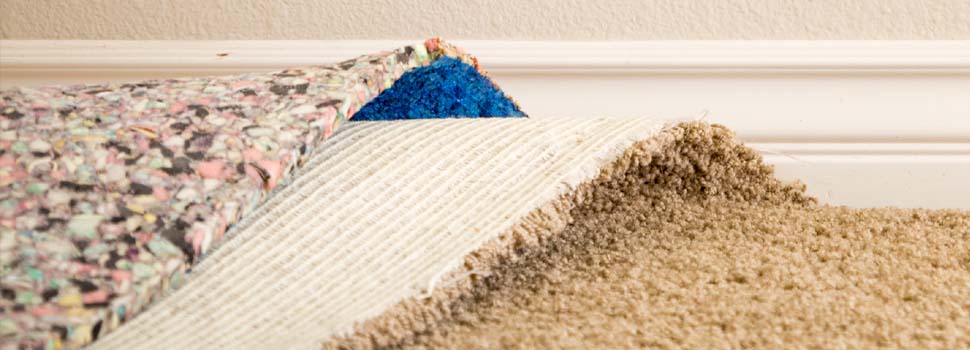
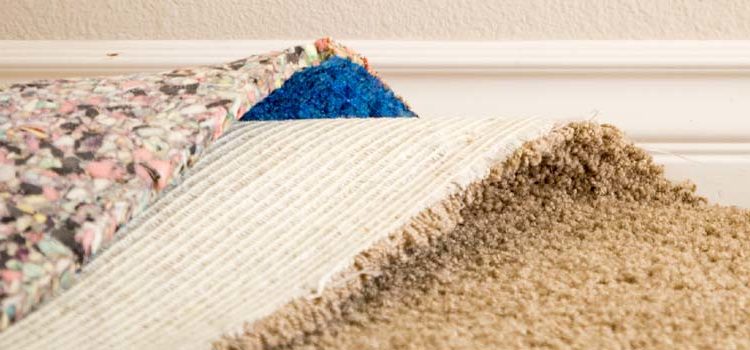

If you have decided to have the floors in your home re-done, then underlay is a term you will hear a lot. The shop/online store where you buy your new flooring will most likely recommend it, as will your installer and anybody you ask who has recently put in new floors. So, what exactly is underlay, and what does it have to do with flooring?
In this guide, you will find out what is carpet underlay, the purpose behind it, and the various types that exist. There are also some handy tips on how to choose the best underlay for different floors. These pointers will equip you with all the information you need to avoid any mistakes that can be made when shopping for this type of flooring for the first time.
Underlay Explained
Floor underlayment is just a thin material that is about ¼ to ½ an inch thick placed underneath an area rug or carpet. Sometimes, it can be between the subfloor and some other type of top floor covering.
Although underlay does not form part of a home’s core structure, it is by no means another needless expense. On the contrary, choosing not to install this floor fitting might cost you more. The reason for this is that underlay can influence how a floor looks, feels, and ultimately wears with time.
Underlay glues (or is stuck) on the subfloor with adhesive taping. And, by covering surface defects, it provides an extra layer of support for the top floor. In effect, there is added stability, which can prevent issues of irregular wear such as:
Underlay also absorbs the shock of daily foot traffic, further helping to prolong the life of a floor. Carpet flooring, for example, can last 30% to 50% longer when installed with the right underlay.
More Underlay Benefits
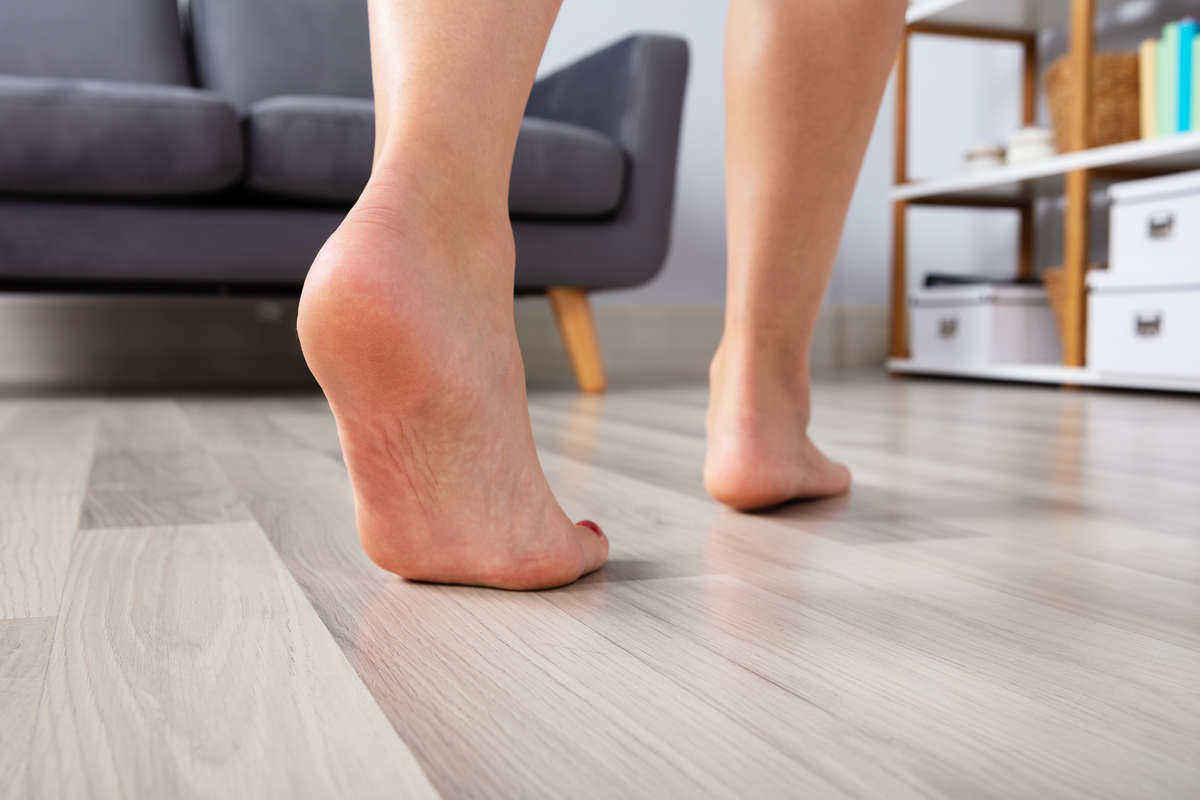
Floor underlay is not just functional. It has lots of other advantages, as outlined below.
Serves as a Cushy Underfoot
As stated earlier, underlays absorb shock as feet tread on the floor. As such, there is less friction when walking, and this will have a lasting effect on maintaining a new look on floors. ·Impact stress on the feet, knees, and hips reduces, allowing for a more comfortable feel when walking across the floor.
You will notice this benefit mostly with carpet flooring. Underlays give carpeted floors a plumper look and squishy feel as you walk.
Adds warmth to a room
Do you cringe at the icy cold feel of tile, stone, and laminate flooring on bare feet? Well, underlays offer heat insulation as a bonus. The material traps cold air and helps prevent it from seeping to the surface.
Laminate floors in particular, which are known as ‘floating floors’ due to not being nailed or glued to the subfloor, get the most from this heat insulation benefit. They have a hollow space, which underlay will fill up and absorbs all draft air that would otherwise be in circulation. Consequently, this helps to keep the floor and room warmer and, in turn, can lower energy bills by up to 15%.
Cuts down on Noise
If you are installing wood floors, you will be thankful for an underlay. While these floors are beautiful, they tend to develop an irritating creaking sound with time.
The noise comes from boards rubbing against each other at the joints or sliding over the nail shafts (or other material) attaching it to the subfloor as you walk. Underlay slows down such wear and tear. Therefore, it allows your floor to remain noise-free for longer.
Sound dampening is possible on other types of floors. Underlay muffles the noise made by everything from walking feet and impact sounds, to music and voices from the TV or people talking.
You should find it very helpful if your home has an upper and lower floor. The amount of sound moving through the ceiling will reduce considerably. As a result, family members can enjoy reduced noise transmitting from other rooms as people move around.
Is It Okay To Install New Flooring Over Existing Underlay?
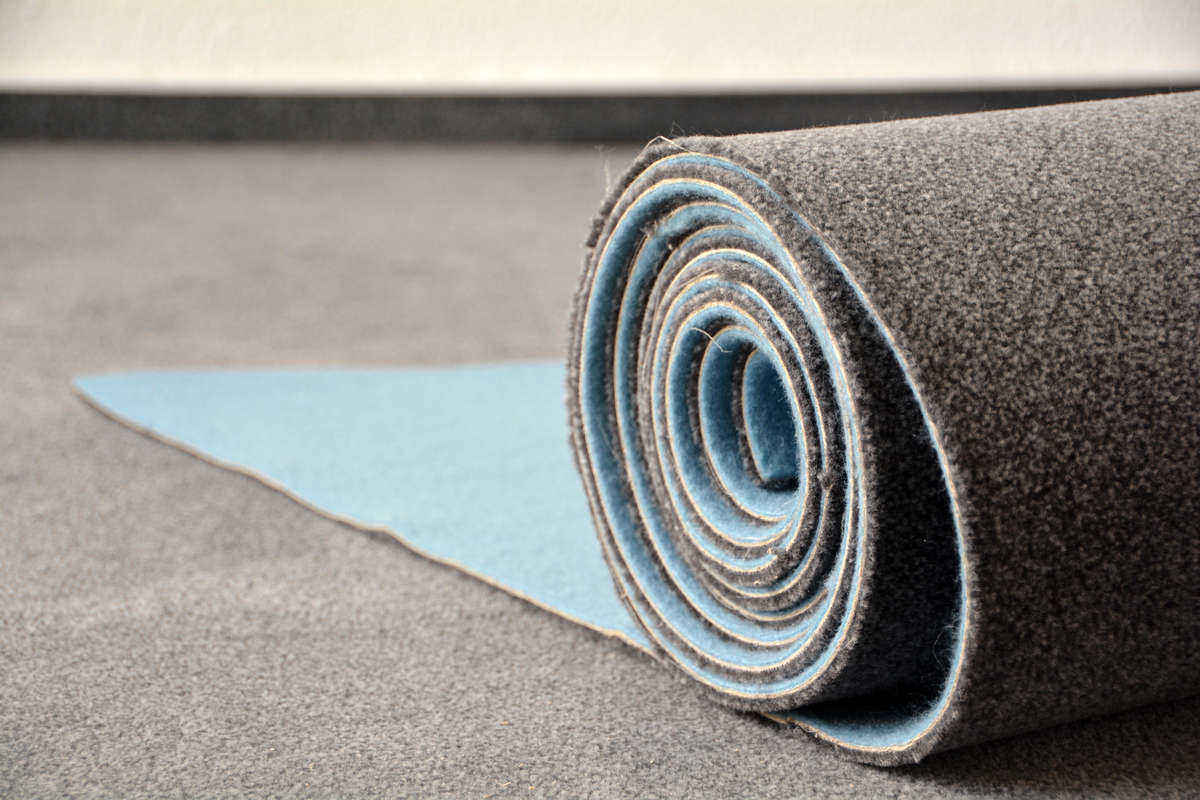
You may be tempted to install new floors over old underlay to save time. Many homeowners often ask whether this is a good idea. The answer is a resounding no. As a general rule of thumb, you should buy underlay for all new flooring you install.
Underlay is a resilient material. Granted, it can withstand the heavy foot traffic of even the busiest of households. But, it still takes a beating over time. That means used underlay, regardless of whether it is of premium quality, will be worn out to some extent.
So, the new floor will have some decent support, but it will be short-lived. Wear and tear will eventually take place quicker than it would have progressed with a new underlay.
What Are The Different Types Of Floor Underlay?
Underlays for floors come in many different materials, but they all fall into two main categories.
1 Soft Underlays
Also known as “floating underlayments”, soft underlays do not attach to the subfloor. Instead, only a simple placement is needed.
As the name implies, these underlays are soft but firm and tend to have excellent compression resistance. As such, this makes them the perfect fit for carpeted floors. However, this option is also fit for laminate and wood floors.
2 Rigid Underlayment
Rigid underlays serve more of a functional purpose. Nailed, screwed or glued to the subfloor, this option provides the support that hard floors need to survive the daily onslaught of foot traffic. Flexing, shifting, or breaking due to too much pressure are some of the flooring issues that rigid underlays help to prevent.
Top Picks For Soft Underlay

PU Foam Underlay
1 Polyurethane (PU) foam
When it comes to soft underlay options, Polyurethane or PU foam as its popularly known is one of the most luxurious picks. It is just like a memory foam mattress, which means it bounces right back to its original shape with every step. Other than having good resilience, PU underlays boast impressive sound absorption, heat insulation, and in-built ability to resist mould.
Another plus for polyfoam underlays is that they are designed with different thicknesses and densities and also come in varying levels of quality. So, while it is one of the more expensive soft underlays, there are options to suit all budgets.
Works best for: carpets (especially in bedrooms or living room where you want a soft underfoot feel) but can also be used for laminate and vinyl floors
2 Rubber
Rubber is the closest rival to the comfort and luxurious feel of PU foam underlays. The debate on which between PU foam and rubber is better is still out since the materials are similar in many ways.
Both are durable, highly flexible, good at reducing sound, and feature a high warmth rating. Rubber, however, tends to be heavier and denser than PU foam. This enhances the overall quality of the underlay but also makes it difficult to install the material in certain areas such as stairs.
Works best for: carpet and wood floors; can also go under tile flooring
3 Crumb Rubber
This underlay option gets its name from the fact that it consists of small crumbs of rubber that are bonded together. One plus for crumb rubber is that it is an environmentally friendly underlay option whose makeup consists of 85% to 100% recycled material.
The rubber used in the construction of the underlay is usually sourced from used tires which means the material can take on conditions as tough as those tires face in the open road. Thanks to this, underlays made of crumb rubber are exceptionally durable and highly resistant to the point of resisting indentation marks in the event of high impact or placement of heavy bearing furniture.
The material is also quite dense making it one of the most comfortable underlays around as well as a great insulator of both heat and sound.
Works best for: carpeted areas with high foot traffic (e.g. stairs, hallways)
4 Waffle
Waffle is another sub-type of rubber underlay. It gets its name from the waffle-like pattern on the underlay’s underside. This design incorporates multiple air pockets into the underlay that work to enhance underfoot comfort and make it easier to clean out logged in dirt from carpets.
The pockets of air also extend the lifespan of a carpet by up to 40%. And since waffle underlay is made of rubber, it also inherits the material’s benefits of heat & sound insulation.
Works best for: carpeted flooring in areas with low foot traffic
5 Felt
Just like the textile material itself, felt underlayment is made up of wool. This underlay option is a traditional choice that is not used as much nowadays. That said, felt underlay has a few benefits that make it a worthwhile option.
The material features a firm feel and build, is great at insulating heat, and has an excellent bounce-back ability from depressions made by heavy items such as furniture.
One thing to note though is that felt is not the most comfortable of underlay options especially when compared to the likes of foam or rubber.
Works best for: carpet floors, more precisely the woven variety
6 Cork
Constructed using the bark of the cork oak tree, cork underlay is probably the only soft underlay option that is not made from cushy materials (although there is an option of rubber cork underlayment).
One unique advantage of cork underlay is that it has an anti-microbial nature that gives it hypoallergenic properties. The material prevents the growth of mould, bacteria, and mildew.
Cork underlay also happens to offer sound dampening capabilities that are second to none owing to natural sound control ability. It is extremely durable and offers thermal insulation as well.
Works best for: wood and laminate floors
Choices For Hard Underlay
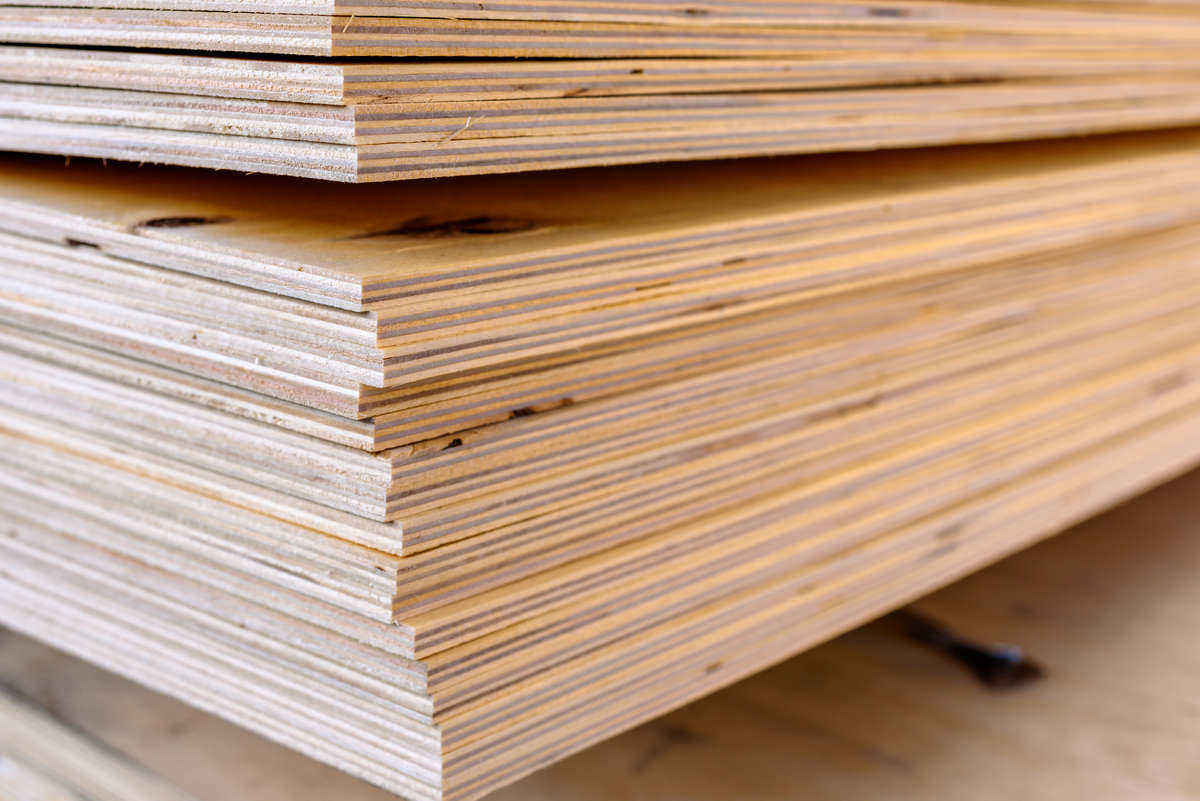
Plywood underlay
1 Plywood
Consisting of thin sheets of wood usually cut to size of about 4 x 8 ft, plywood underlay is the go-to pick for many hard floor applications. The underlay tends to feature a bottom rough side and a smooth surface at the top that allows for attachment of even the thinnest of flooring material (e.g. vinyl).
Works best for:hardwood, laminate, and all engineered wood floors
2 Underlay Panels
An alternative to plywood sheets, underlay panels are made up of tile pieces measuring 2 x 2 ft. The panels interlock with each other to form a smooth mini-floor cover where laminate and wood floors can be placed on or a carpeted floor rolled over. The only downside is that underlay panels are quite expensive.
Work best for: laminate as well as carpet flooring
3 Timber safe
Timber safe is the rubber version of rigid underlays. Its construction comprises of a rubber material (usually highly dense & heavy duty) sandwiched between fleece backing at the top and bottom.
The fleece backing injects more power and stability to the rubber material making it possible for non-carpet floors to be installed without flattening the underlay. Timber safe underlays are also known for having great insulation capabilities thanks to the fleece backing.
Works best for: wood and laminate flooring.
4 Acoustic Underlays
These are designed to dampen sounds of walking feet on naturally noisy floors. They come in all manner of varieties including cork and felt-designs as well as blended versions such as polyester padding in between two rubber sheet layers.
Works best for: laminate floors owing to their floating nature; is also suitable for wood floors.
5 Cement Board Underlayment (CBU)
While cement board underlay sounds like something very hard, it is thin boards comprising of a mixture of cement and fibres from wood or cellulose.
The fibres are used to reinforce the cement and add some flexibility to the end-product. As a result, CBUs are smooth, easy to cut boards that come in several sizes. They also offer an added advantage of being mould resistant, making them suitable for wet areas.
Works best for: mortared flooring like stone or ceramic tiles
General Guidelines For Choosing The Right Underlay Material For You
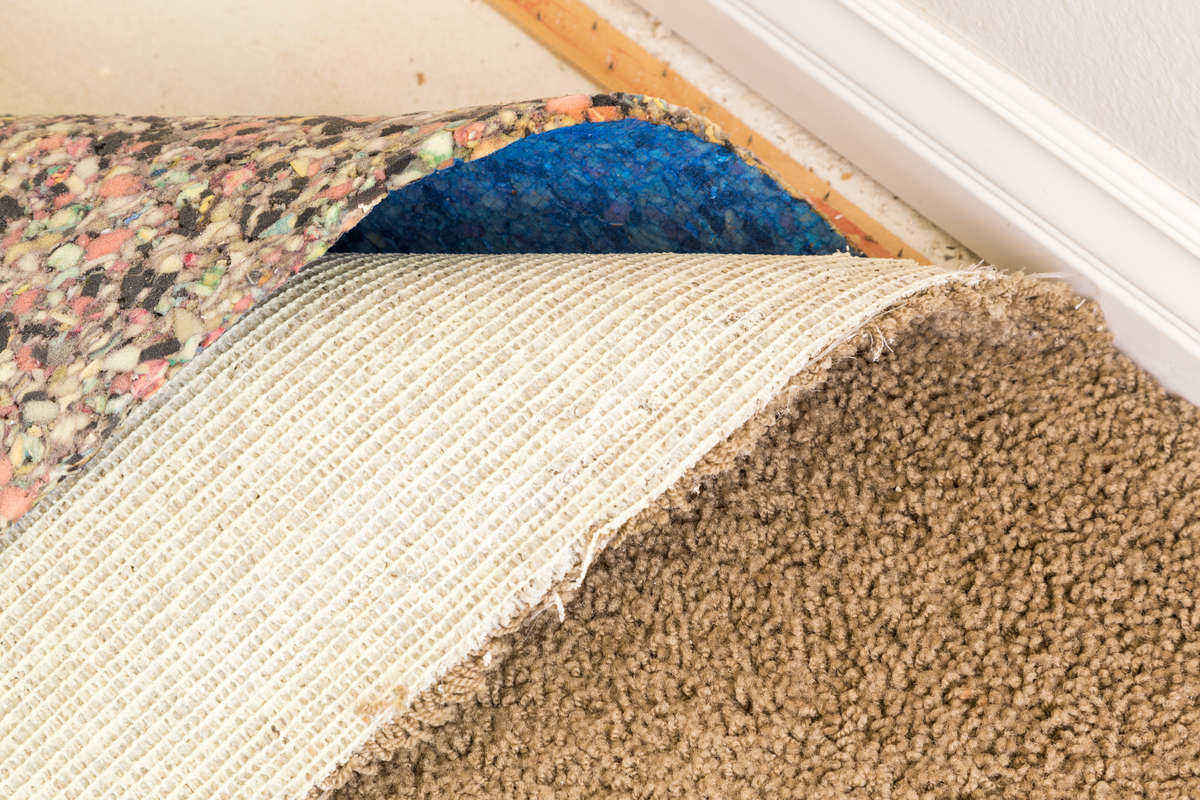
With plenty of options available for both soft and rigid underlay categories, you will have your work cut out for you when choosing underlay. What’s more, different manufacturers supply their products with a host of comfort and performance-enhancing features, making it even more difficult to make your pick.
For the most part, the ideal pick will depend on the type of floor you are having installed. However, there are plenty of other considerations to look at. So, dive in and see what key points to ponder on when shopping for underlay.
1 What kind of Subfloor do you have?
Normally, this is not an issue since wooden subfloors allow for just about any underlay. Concrete subfloors, however, are a different story, as they are very particular regarding what can be installed over them.
The underlay you install must be resistant to water since concrete tends to release moisture. Of course, underlay materials with natural moisture resistance will be the better fit. However, any material with a built-in vapour barrier will do a fine job as well.
2 Where do you intend to have the Underlay Installed?
Studies show that over 70% of consumers purchase underlay for its comfort benefit while the rest consider functionality more important. Whatever your reason for opting for underlay, you must consider the area of installation as it plays a huge role in determining what would be an ideal pick.
High traffic areas such as the living room or stairs are better off with a resilient or dense floor underlay (timber safe, rubber, etc) that can take the pressure of everyday comings and goings in the area.
Alternatively, rooms such as offices and bedrooms can do with plusher underlays (e.g. PU foam) that provide a luxurious feel when walking, since not much foot traffic passes through.
3 Are you dealing with any Special Circumstances?
You also need to look at the conditions of the area of installation. Bathrooms and kitchens require floor underlay with a built-in damp-proof membrane, vapour barrier, or absorbent padding since they are wet areas. Another consideration to make is if you have underfloor heating in your home.
4 What is Tog Rating on an Underlay?
Tog rating is simply the measure of how thick an underlay is. The density, thickness, and composition of material are put into consideration when assigning tog rating on underlays. The numbers range from a thin 0.1 to a high of 4.0 tog rating for the bulkier underlays.
You must check out tog rating when hunting for underlay since it serves as an indication of the level of quality and overall performance of the underlayment. Generally, thicker options (i.e. those with higher tog ratings) deliver more soundproofing capabilities and insulate a room better than those with low tog rating.
This makes them an ideal choice if you are looking for ultimate underfoot comfort or want an underlay that will make for cosy winters or protect your ears from hollow sounding wooden floors.
Low tog rating, in turn, is best for floors with underfloor heating. The maximum recommended tog rating for a home with underfloor heating is 2.5.
You should also look at other ratings on an underlay such as warmth and decibel rating. It will give you an idea of the underlay’s performance in which case you can determine if it will be a good fit for your home.
5 What is Ideal Underlay Thickness?
Manufacturers make their underlays in varying thicknesses (i.e. depth). The thicker an underlay the more comfortable it will be. So, if you want that luxuriously cushioned feeling thicknesses of 11 or 12mm would be ideal (some options measure as high as 16mm).
Keep in mind though that it is challenging to install thick underlay in small surfaces like the stairs. In such areas, an underlay of 9mm or lower would be better.
6 What is Your Budget?
Before buying underlay, you will need to establish how much you will need. This is as simple as measuring the surface area of a room in square m.
For example, if the room is a 5 by 2 m rectangular space, you will need 10m2 of underlay. You can add an extra 3 or so inches for each edge of the space to avoid the inconvenience of running out of underlay.
Once you have an idea of how much you need, you can then allocate a budget. The great thing about underlays is that they are fairly affordable. Prices usually range from £2 per square meter for the budget end of underlays to £10 for premium purchase.
So, assuming the underlay you need is going over a 17.1 sq m living room (the average size for UK homes), you will spend around £60 on a cheap underlay, £100 on mid-tier underlay, and under £200 for a high end one.
Conclusion
When putting in new floors, it is easy to overlook or even dismiss the need for underlay. Considering that underlay not only lengthens the lifespan of all flooring materials but also enhances the look and feel of floors, you will need both to truly complete your floor renovation project.
This Weeks Most Popular Carpet Underlay
- 1.37m Wide
- 10mm Thickness, Grade A, Environmentally Friendly
- Non Toxic, Easy to Fit, 90kg per m3, 2.71 Tog
- A premuim quality, entry level product with a luxurious feel underfoot, suitable for all areas of...
- Excellent heat and sound insulation properties (not suitable for underfloor heating)
- Protects your carpet from premature wear
Prices & information last updated on 2022-07-23



